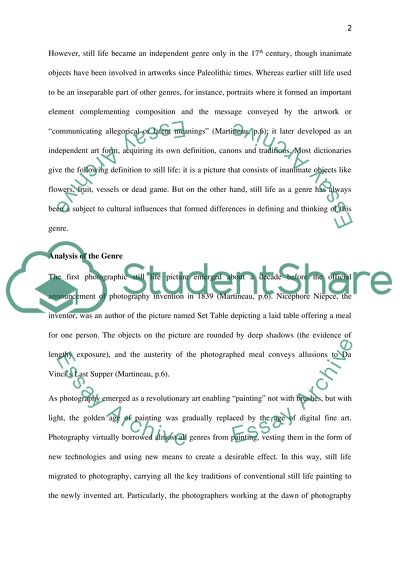Cite this document
(“An analysis of how photography addresses ideas about still life, with Essay - 1”, n.d.)
An analysis of how photography addresses ideas about still life, with Essay - 1. Retrieved from https://studentshare.org/visual-arts-film-studies/1664801-an-analysis-of-how-photography-addresses-ideas-about-still-life-with-particular-reference-to-the-works-of-irving-penn-still-life
An analysis of how photography addresses ideas about still life, with Essay - 1. Retrieved from https://studentshare.org/visual-arts-film-studies/1664801-an-analysis-of-how-photography-addresses-ideas-about-still-life-with-particular-reference-to-the-works-of-irving-penn-still-life
(An Analysis of How Photography Addresses Ideas about Still Life, With Essay - 1)
An Analysis of How Photography Addresses Ideas about Still Life, With Essay - 1. https://studentshare.org/visual-arts-film-studies/1664801-an-analysis-of-how-photography-addresses-ideas-about-still-life-with-particular-reference-to-the-works-of-irving-penn-still-life.
An Analysis of How Photography Addresses Ideas about Still Life, With Essay - 1. https://studentshare.org/visual-arts-film-studies/1664801-an-analysis-of-how-photography-addresses-ideas-about-still-life-with-particular-reference-to-the-works-of-irving-penn-still-life.
“An Analysis of How Photography Addresses Ideas about Still Life, With Essay - 1”, n.d. https://studentshare.org/visual-arts-film-studies/1664801-an-analysis-of-how-photography-addresses-ideas-about-still-life-with-particular-reference-to-the-works-of-irving-penn-still-life.


